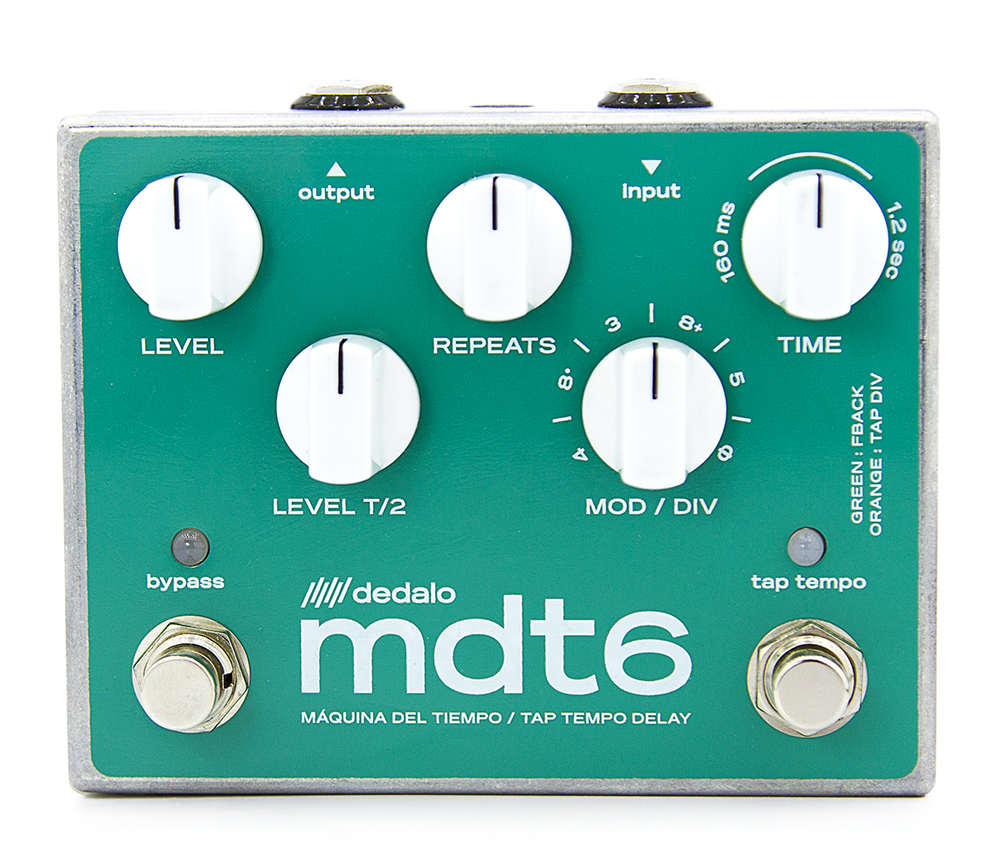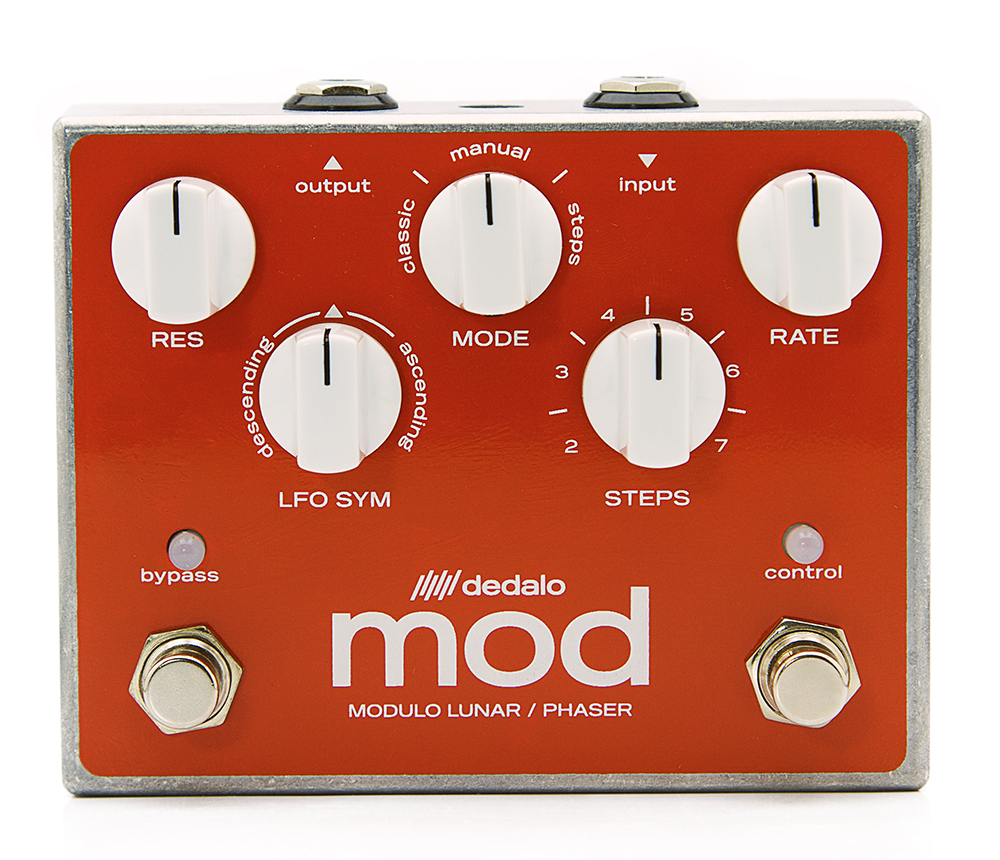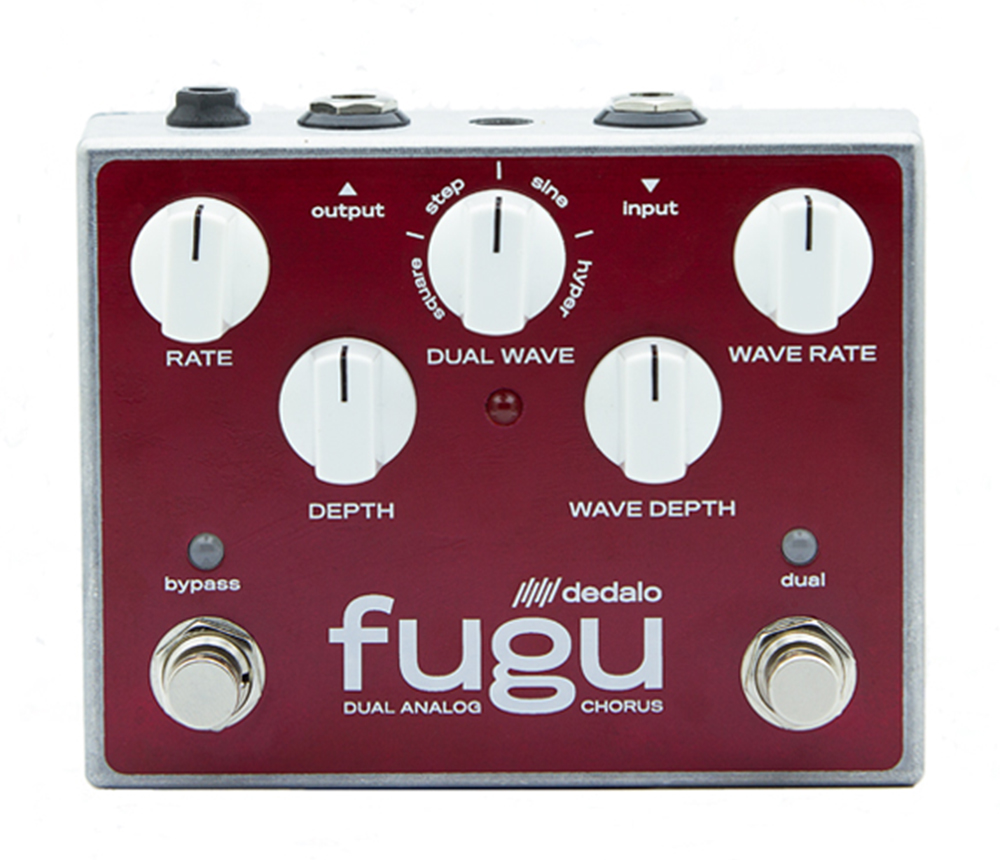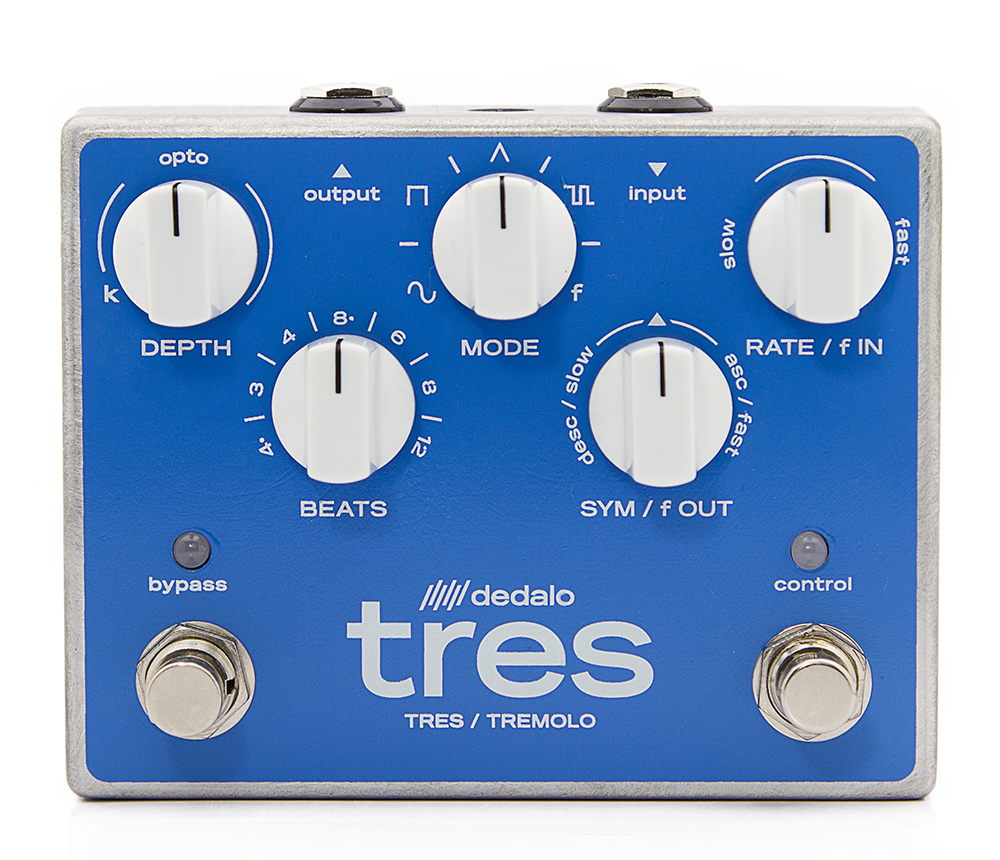
TRES
/ TREMOLO
With its FET/LDR analog circuit which provides the most organic oscillation, and its innovative μ-control technology, the Tres lets you create the tremolo that you crave, from the classic “vibrato” of old, to modern rhythmic patterns and Fade/Kill effects.
145 USD + Shipping
Shipping & payment infoShips by FEDEX International Priority, takes 7 days to most places (Not available in United Kingdom).
Please email to info@dedalofx.com.ar for any questions. close
Features
- Double analog modulation technology: optical and FET
- 4 waveforms: sine, square, triangle and pulse
- Kill mode with more than 50dB of depth
- Beats control with 7 bar subdivisions
- Control for symmetry of the LFO
- Optical switch for functions Tap Tempo, Fade and Foot-Speed
- Tap Sync and Bypass Sync
- True Bypass
Specifications
Current Draw: 40mA at 9v DC
Input Impedance: 700Kohm
Power supply: DC 9v center negative
Battery Power: 9v Alkaline
Dimensions: 12cm x 9.4cm x 5.4cm
Weight: 475gr
Color: Light Blue
Model: 2015 - TRS5
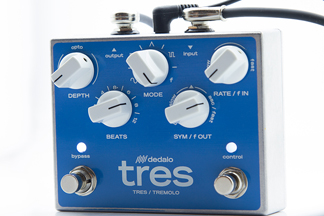
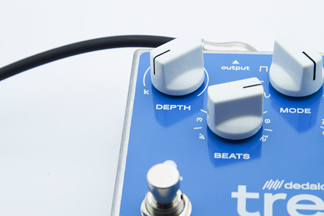

![]() User Manual Download the owners manual of this product to know it in depth and trying out new sounds. (pdf)
User Manual Download the owners manual of this product to know it in depth and trying out new sounds. (pdf)
![]() 2-year warranty! All our products are covered under a two year guarantee. For further information check your owners manual.
2-year warranty! All our products are covered under a two year guarantee. For further information check your owners manual.
Controls
DEPTH: Depth of the tremolo effect. At minimum, the “k” (KILL) mode is activated: the modulation is made by the FET circuit and the sound gets chopped with sharp edges and more than 50dB of depth. Rotating the control to the right the Opto mode is activated, with its depth increasing from zero to the max as the control is turned. The Opto mode allows for the different waveforms, and provides a softer sound even in the square waves.
BEATS: Active only in Pulse mode. The oscillation cycle is divided into the number of times (beats) indicated by this control: 4 • (dotted), 3, 4, 8 • (dotted), 6, 8, 12. E.g: If you select 6, the complete cycle is divided into 6 beats, creating a rhythm in 6/8. For optimum performance, position the knob to the center of the desired value.
MODE: Choose from four waveforms and the special mode “f” (FADE).
• Pulse: Two rhythmic pulses. The oscillation cycle corresponds to one bar, where the first pulse falls on beat 1 and the second falls on beat 3. The controls BEATS and SYM allow you to set the parameters for this mode.
• Triangle: Triangular waveform. Softer tremolo.
• Square: Square wave. Deeper tremolo.
• Sine: Sine wave. The classical “vibrato” of old amplifiers.
• f: FADE mode. In this mode the LFO stops and the output level is controlled by the Control switch between full level (switch released) and silence (switch pressed). This allows to do the tremolo effect with foot movements, or make fade in and fade out effects (like for example backwards guitar sounds). The fading time is set by the controls f IN and f OUT. When the KILL mode is active, the switching between levels is made with no transition time for a Kill Switch effect. For optimum performance, position the knob to the center of the desired value.
SYM / f OUT: Symmetry of the waveform. Turn to the right to increase the rise time, and to the left to increase the fall time. In the center, the rise and fall times are equal. In PULSE mode, it controls the duration of the second pulse. Turn to the right for longer duration. In FADE mode, it controls the fade out duration. Turn to the right for faster times.
RATE / f IN: Oscillation speed of effect. In FADE mode, it controls the fade in duration. Turn to the right for faster times.
TRUE BYPASS: Turns on/off the effect. The true bypass switch allows your sound to remain intact when the effect is off. Besides, the LFO is synchronized to the start of the cycle each time the pedal is activated by this switch (Bypass Sync).
CONTROL: Optical switch for the functions:
• Tap Tempo: Controls the effect speed by means of taping in the switch. To use it, simply tap on the switch between three and sixteen times, at the desired speed. The resulting tempo is the average between the taps, and will remain until a new tempo is set by either tapping or turning the Rate knob.
• Tap Sync: If you make a single tap on this switch, the LFO gets synchronized to the beginning of the cycle. This function is only active when the rate was previously set by the Tap Tempo
• Foot-Speed: Modifies the speed of oscillation of the effect. The rate will rise gradually to its maximum speed while the switch is pressed, returning to the speed indicated by the RATE control (or set by Tap Tempo) when it is released.
• Fade: In FADE mode this switch controls the output level, doing the tremolo and fade effects by movements of the foot.
LED: Speed and mode change indicator. When changing modes, the LED will blink indicating the change.
Operation
The TRS-5 uses dual modulation technology: Optical (using a custom optocoupler developed by us) and FET.
In Optical mode, there are four waveforms available: sine, square, triangle, and pulse.
The FET modulation is enabled in Kill (k) mode, with 50 dB of depth and a square kind of wave, which cuts through any distortion you may apply after the pedal.
The LFO symmetry control allows you to adjust the rise and fall periods of the oscillations, further shaping the waveforms to taste.
In Pulse mode, the Beat control gives you seven rhythmic subdivisions of the cycle.
Pristine signal path: all functions are applied based on natural audio and the shortest, and fully analog signal path.
The digital u-control provides several advanced functions:
Tap Tempo: Sets the oscillation speed using taps.
Fade: Performs the tremolo or swell effect directly with your foot.
Foot Speed: Causes a gradual acceleration of the effect.
Tap Sync allows you to resynchronize the modulation with a simple tap.
All these functions are performed with the optical Control switch.
** Undocumented Feature ** Bypass Sync resynchronizes the cycle each time you activate the pedal with the True Bypass switch, to find the tremolo in a predictable place every time you want.
Reviews & extras
Dedalo TRS em Premier Guitar:
NAMM 2016: Editors' Picks
"The pedal has a ton of subdivision and wave shape configuration options (the square wave trem sounds exceptionally yummy.) But it also packs less conventional trem tricks, like the ability to blend optical and solid state tremolo and a cool slow ramp function that you can dial in via a tap tempo switch." Read more...
Suggested pedals
